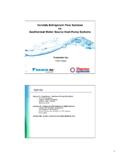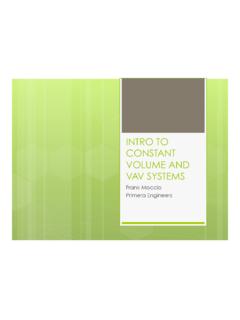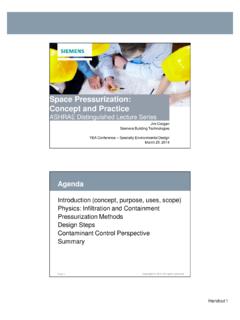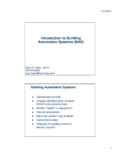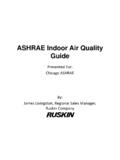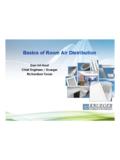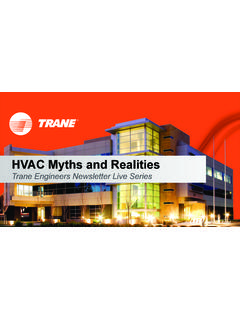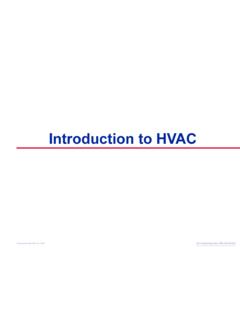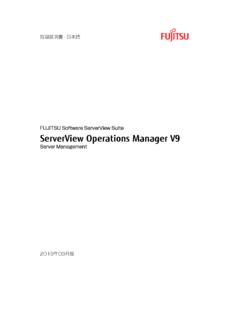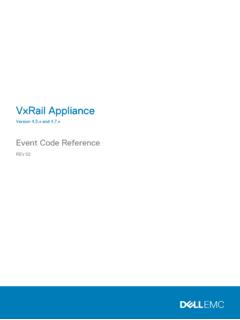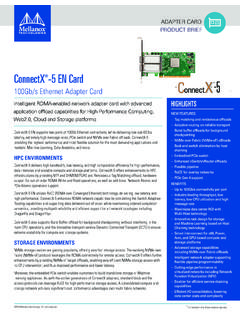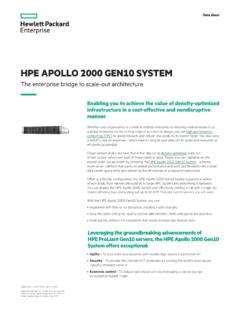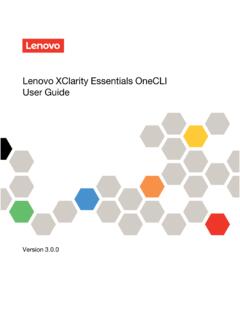Transcription of Introduction to Building Automation Systems (BAS)
1 3/11/2013. Introduction to Building Automation Systems (BAS). Ryan R. Hoger, LEED AP. Building Automation Systems z Centralized controls z Change scheduling for multiple HVAC units at same time z Monitor health of equipment z Internet accessible z Alarming via text msg or email z Collect/trend data z Integrate to lighting control or security system 1. 3/11/2013. z DDC - Direct Digital Control of an HVAC. system z A method of monitoring and controlling HVAC system performance by collecting, processing, and sending information using sensors, actuators, and microprocessors. What is DDC? z DDC is the concept or theory of HVAC. system control that uses digital controls z Physically, DDC encompasses all the devices used to implement this control method: a whole group of DDC.
2 Controllers/microprocessors, actuators, sensors, and other devices. What is DDC? 2. 3/11/2013. DDC - the Control Theory input-process-output cycle z A point is ANY input or output device used to control the overall or specific performance of equipment or output devices related to the equipment. What Is a Point? 3. 3/11/2013. AI z Analog input - a sensor that monitors physical data, such as temperature, flow, or pressure. DI z Discrete input - a sensor that monitors status. Momentary and maintained switches, ON-OFF. equipment status, and digital pulses from flow and electric power meters are discrete inputs. AOz Analog output - a physical action of a proportional device in the controlled equipment - , actuator opens air damper from 20% to 40%, other dampers, valves, inlet guide vanes, etc.
3 DOz Discrete output - changes or maintains device status. Performs momentary or maintained switching for start/stop of pumps, fans, two-position dampers, and on/off control. Four Kinds of Points Input sensors and status Output devices act based devices react to changes in on sensor and status conditions. Conditions device reactions. include internal load, outside air temperature, and output actions. Open cooling coil valve (output action). Supply air temperature sensor Ex. 1: SAT detects (input reaction) decrease in temperature. Filters on an air handler get dirty (conditions). Air switch reacts by Ex. 2: closing contact for filter dirty alarm. DDC: Actions and Reactions 4. 3/11/2013. Control Point Identification Exercise AI DI. z Temperature z Switch dry contact Thermistors (open or closed).
4 Resistance Temp. Detectors Airflow (RTDs) Water Transmitters Differential pressure z Pressure z High/low limit switch z Humidity (alarm or normal). z Flow (CFM, GPM) Freeze alarm Smoke detectors z Voltage z Wattmeter pulses z Current (pulse initiator or z CO2 counter). Sensor and Status Devices used as Input Points (Reactions). 5. 3/11/2013. AO z Damper actuators DO z Solenoid valves z Modulating valves z Relays /. z VFD contactors z Alarm signal Devices used as Output Points (Actions). Closed Loop Control is accomplished by the control signal being sent to the controlled device with constant feedback from the sensor/status device providing input to the controller. DDC: Closed Loop Control 6. 3/11/2013. Closed loop control is determined by: z Control algorithms z Configuration values z Time schedule data z Setpoint schedule data Closed Loop Control Heating/cooling coil control Humidification/dehumidification Mixed air damper optimization VAV fan control VAV supply & return fan tracking Indoor air quality Generic PID control Control point reset Typical Control Algorithms 7.
5 3/11/2013. Time of day scheduling Discrete device controlled as analog Discrete interlock Discrete staging Proportional thermostat Primary/secondary pump control Night free cooling Adaptable start/stop Permissive interlock Typical Control Algorithms (cont'd). P Proportional PI Proportional-Integral PID Proportional-Integral-Derivative Algorithm Type Used by Processor Determines Control Strategy 8. 3/11/2013. PID =. Proportional-Integral-Derivative Control z What it is: This type of control algorithm is based on value/amount (proportion), rate of change (integral), and error allowances (derivative). PID control calculates and sends commands for outputs based on all three types of information. z Advantages: More precise than P and PI controls, PID wastes less energy based on more frequent feedback and quicker responses.
6 What Is PID Control? z What it is: Control algorithm based only on value/amount (proportion). z Disadvantages: Less precise than PID and PI control;. cannot respond to error margins or time. Uses the most energy due to over- and under- outputs. Proportional Control (P). 9. 3/11/2013. z What it is: Control algorithm based on value/amount (proportion), rate of change (integral). PID uses error allowances (derivative) as well. z Advantages: More precise control and less energy used than proportional (P); minimum swings from setpoints. Proportional-Integral Control (PI) &. (PID). Exercise 1: Building Direct Digital Control on a CV Air Handler 10. 3/11/2013. Exercise 1: Base CV. Air Handler Unit -No Controls Exercise 1: AHU - DDC. Control of Start / Stop Scheduling 11.
7 3/11/2013. Exercise 1: AHU - Add DDC. Damper Exercise 1: AHU - Add DDC. Cooling Coil Control 12. 3/11/2013. Exercise 1: AHU - Add DDC Outside Air reset and Enthalpy Control 13. 3/11/2013. Control Point Summary for Base CV AHU. Exercise 2: Building Direct Digital Control on a VAV Air Handler 14. 3/11/2013. History z VAV Systems came into favor for mid and large size facilities in the 1960s and 1970s Save energy Improve comfort Take advantage of Building diversity Cooling needed year round for true interior core zones z Sequence Main AHU provides morning warm-up heat until RAT. setpoint is satisfied all zones at 100% design airflow AHU switches to 55 F discharge air controlled cooling . zones modulate CFM to controls space temp No AHU heat remainder of day individual zone reheat or baseboard as needed Zoning Systems 15.
8 3/11/2013. Single Zone Systems Heating/Cooling Heating/Cooling Heating/Cooling Heating/Cooling Unit Unit Unit Unit ROOF. TMT TM TMZC TM. ZONE 1 ZONE 2 ZONE 3 ZONE 4. Multiple Zone Systems 16. 3/11/2013. To Build DDC on a VAV AHU, Start with DDC on a CV Exercise 2: Create a VAV. AHU with Inlet Guide * If using VFD, use two Variable Frequency Drives instead, but you will still need the same control points and HPS shown. 17. 3/11/2013. Filter Status (FLTS). FreezeStat (FRZ). Smoke Detector (SMK). Typical DDC Items You Can Add as Optional Items: Exercise 2: VAV AHU with DDC Filter Status 18. 3/11/2013. Exercise 2: VAV AHU with DDC. FreezeStat Exercise 2: VAV AHU with DDC Smoke Detector 19. 3/11/2013. Control Point Summary for Base VAV AHU. DDC Controllers Application Programmable Specific controllers controllers Factory integrated controllers 20.
9 3/11/2013. Types of Direct Digital Control Networks z Interface - devices and software that work as a translator between a DDC system and the humans who operate it. z An interface is the operator's window into a Building 's operating Systems and conditions. Interfaces to DDC. 21. 3/11/2013. User interfaces: Allow more efficient system operation monitoring. You can look at what's happening on all floors from the tenth floor if DDC network is peer-to-peer. Allow immediate diagnosis of HVAC units and controls, including changes, without physically being in front of the unit. Can provide reports ( , historical, consumable, run times, system activity) to be used as records of Building operations. Can provide graphical representations of the controlled system.
10 User Interface Benefits User Interface Types 22. 3/11/2013. Interface Examples Hand-held Connected to a DDC Controller PC Connected to a DDC Network Interface Examples 23. 3/11/2013. Web Server Connected to DDC Network Interface Examples Web Interfaces z Standard web browser or WAP. access z View system status z Access schedules and setpoints z Trending, alarming, reporting z Real time interactive graphics 24. 3/11/2013. FLOOR PLAN GRAPHICS. EQUIPMENT GRAPHICS. 25. 3/11/2013. EQUIPMENT GRAPHICS. FLEXIBLE SCHEDULING. 26. 3/11/2013. TRENDING. Internet Thermostats z Low cost alternative to BAS. z Direct to Ethernet z No PC software uses standard web browser z No access fees z Text/email alerts 27. 3/11/2013. Internet Thermostats Internet Thermostats 28.


